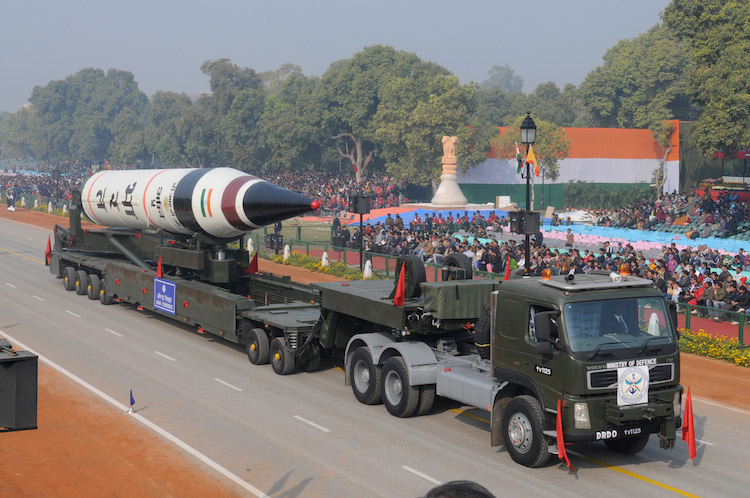By Ramesh Jaura
BERLIN | NEW DELHI (IDN) — India’s Prime Minister Narendra Modi is confronted with an increasing demand to join the landmark Treaty on the Prohibition of Nuclear Weapons (TPNW), which was adopted in January 2021 by 122 members of the UN General Assembly—a clear majority. The Treaty entered into force after ratification by 50 member-States of the UN. The number of signatories has since risen to 91. The TPNW bans the use, possession, testing, and transfer of nuclear weapons under international law.
The importance of the call on Mr Modi is underlined by the fact that India is one of the world’s nine nuclear-armed states. Together they possess an estimated total of roughly 13,000 nuclear weapons, most of which are many times more powerful than the atomic bomb dropped on Hiroshima seventy-seven years ago.
The five permanent (P5) members of the UN Security Council—Russia, the United States, China, France, and United Kingdom—have the largest chunk of the atomic arsenal. But the bombs of Pakistan, India, Israel and North Korea are no less dangerous.
Next to Pakistan, which, according to the Stockholm International Peace Research Institute (SIPRI) Yearbook 2021, holds 165 nukes, is India, with 156 A-weapons. Then follow Israel (90) and North Korea (40-50). None of the nine nuclear-armed states has yet joined the landmark Treaty on the Prohibition of Nuclear Weapons (TPNW).
“Were India to resume its traditional vanguard role in matters relating to ridding the world of the(se) awful weapons, we would be the first de facto nuclear weapon state to argue for the elimination of these highly dangerous weapons,” says Mr Mani Shankar Aiyar, held in high regard as a former diplomat.
In a contribution to the eminent Indian Express newspaper, Mr C. Raja Mohan—Indian academic, journalist and foreign policy analyst—argues that India premised its strategy on building ‘credible minimum deterrence’. The time has come to reflect on what is ‘credible’ and redefine what ‘minimum’ might be.
“India … ought to be paying a lot more attention to the international nuclear discourse that is acquiring new dimensions and taking a fresh look at its own civilian and military nuclear programmes,” he adds.
A Senior Fellow with the Asia Society Policy Institute (ASPI)—a division of the Asia Society India Centre, Mumbai—he points out that after the nuclear tests in 1998, India’s focus shifted to managing the consequences of that decision—including global economic sanctions.
The historic India-US civil nuclear initiative of July 2005 finally produced a framework that brought to an end Delhi’s extended conflict with the Treaty on the Non-Proliferation of Nuclear Weapons (NPT) system, which it has not signed.
At the heart of the deal was the separation of India’s civil and military nuclear programmes. The consummation of the India-US nuclear deal a few years later gave Delhi the freedom to develop its nuclear arsenal and resume civilian nuclear cooperation with the rest of the world which was blocked since India’s first nuclear test in May 1974.
There was a fierce political debate—often slipping into the “headless chicken” mode—in Delhi on the terms of the nuclear engagement with the US, notes Mr Mohan.
“Many in Delhi argued that India was sacrificing the autonomy of its nuclear programme and its foreign policy… India has not bought a single reactor from the US. Nor has it become a much-feared ‘junior partner’ to the US. India’s independent foreign policy appears to be thriving. Ironically, as India’s atomic isolation eased after 2008, India’s nuclear debate lost much of its urgency.”
He adds: The failure of the Tenth NPT Review Conference in August 2022, however, does reveal many of the new challenges facing the global nuclear order today and their implications for India.
Mr Mani Shankar Aiyar, a former Indian government minister, notes that not only India did not vote in favour of the TPNW, but also that since the last eight years, “our country has shown no inclination to champion the cause of universal nuclear disarmament”.
This, he adds, is in sharp contrast to the vocal opposition that Mahatma Gandhi, Jawaharlal Nehru and Indira Gandhi (both Prime Ministers) expressed to the possession, threat and use of nuclear weapons. They were followed by (the then Prime Minister) Rajiv Gandhi who presented to the UN in 1988 a detailed action plan on how to arrive in stages to a nuclear-weapons-free and nonviolent world order within a timeline of 22 years, that is by 2010.
When that deadline was approaching with no attempt at implementing the proposed action plan, the then Foreign Minister Pranab Mukherjee proposed in the UN in 2006 a summary of the main objectives of the action plan as a working paper.
“But since the emergence of the [Bharatiya Janata Party] BJP-led government [headed by Mr Modi] in 2014, India appears to have disavowed both the action plan and the working paper. It is significant that [former Foreign Minister] Mukherjee’s working paper followed, and did not precede, India becoming a de facto nuclear weapon state nearly a decade earlier,” asserts Mr Aiyar.
Whereas the 1988 action plan and working paper had few takers, there has now emerged a majority of non-nuclear states who seek a world without these and other weapons of mass destruction.
Mr Aiyar stresses: “A precedent exists in the UN convention that outlaws the use or threat of use of chemical weapons. The TPNW reflects many of the key provisions of the chemical weapons prohibition treaty. If chemical weapons can be banned by UN decision, why not nuclear weapons?”
It remains to be seen whether the Indian Prime Minister take the necessary steps. [IDN-InDepthNews – 01 December 2022]
Photo: India’s Agni-V ballistic missile at Republic Day parade in January 2013. Source: Ministry of Defence, Government of India.


